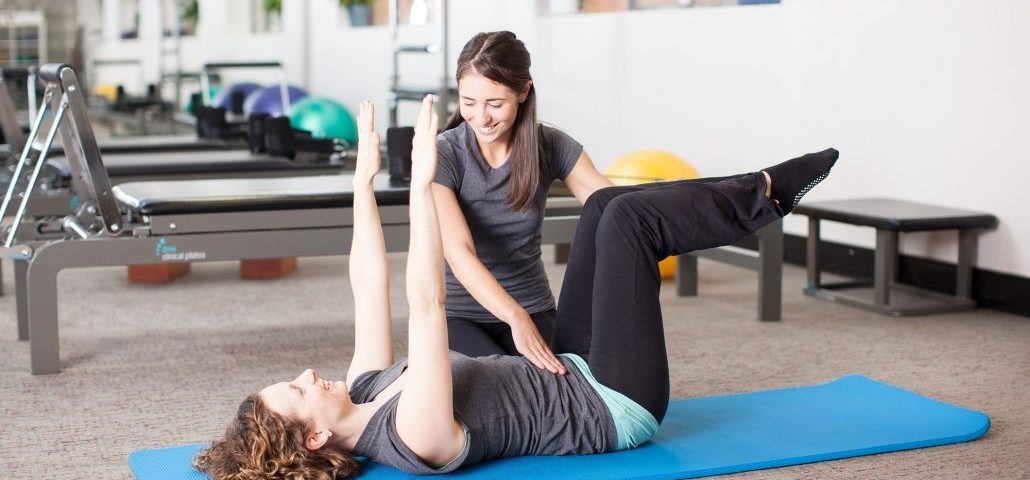Clinical Pilates

Walking
April 15, 2019
Benefits of physical activity
April 28, 2019History of Pilates and Clinical Pilates
Pilates took its name from Joseph Pilates, who was the inventor of this training method. The initiation of this method is dated back on the first half of the 20th century. Joseph Pilates was influenced from the World War I, while he was being held. He worked on developing his method over four years, creating an exercise system which focuses on strengthening the human body and mind.
Pilates was originally based on six principles: concentration, control, center, flow, precision and breathing. Using these principles, the focus of this training is to build strength, especially in the core, develop body control and endurance, and improve flexibility, coordination and balance. Joseph Pilates describes his method as a workout consisted of controlled movements. Pilates covers a full range of difficulty from beginner to advanced, the intensity can be increased gradually as the body adapts to the exercises.
 Clinical Pilates stems from a merger of the traditional/classic Pilates based exercises and Physiotherapy. The physiotherapy assessment and expertise combines the clinical approach with the movement; and it is used to break down and modify the traditional Pilates exercises to be suitable for clinical population. The aim of this approach is to provide the most suitable exercises for individuals recovering from injuries or working on rehabilitation programs, targeting their regain of a correct and positive sense of movement. Clinical Pilates is suitable for use in orthopedic, neurological, women’s health, sports and pediatric settings.
Clinical Pilates stems from a merger of the traditional/classic Pilates based exercises and Physiotherapy. The physiotherapy assessment and expertise combines the clinical approach with the movement; and it is used to break down and modify the traditional Pilates exercises to be suitable for clinical population. The aim of this approach is to provide the most suitable exercises for individuals recovering from injuries or working on rehabilitation programs, targeting their regain of a correct and positive sense of movement. Clinical Pilates is suitable for use in orthopedic, neurological, women’s health, sports and pediatric settings.
“What about Pain and Clinical Pilates?”. There are studies to support that exercise has been successful in pain management (Yamato, 2015). To implement this into practice, firstly, it is important to identify the movement dysfunction. The normal movement assessment in addition to the pilates movement will create individual’s picture of movement patterns, which can then be used to plan a clinically appropriate and tailored program. Very important at this stage is to address people’s awareness of movement and link that to their freedom from pain. Better results are achieved when people know what they are doing and why they are doing it. Furthermore, the level of the exercises is the next key factor in order to create the most optimal strategy. Using clinical reasoning, the appropriate initial load and rate of progression are decided and reviewed regularly to ensure continues improvement. Clinical Pilates is unique in the process of assess, re-education, re-assessment to establish a continuous progression and improvement.
From theory to practice, there are five key elements that form the foundation of Clinical Pilates practice. It is essential to learn, understand and integrate these components from the beginning in order to practise in the most optimal position for the whole body. The five key elements consist of Breathing, Centering, Neutral Spine and Head Position, Ribcage control and position, and Shoulder Blade placement.
Breathing: Clinical Pilates encourages the natural mechanics; inhaling wide into the sides and underneath the ribcage and exhaling fully, letting the muscles relax. Breathing correctly promotes efficient exchange of gases and function of the muscles, and helps to avoid any unnecessary tension.
Centering: Aim is to set and keep the center engaged by activating the pelvic floor muscles, while practicing the exercises. By engaging the center, stronger connection is achieved to the supportive core, which consists of abdominal and pelvic floor muscles.
Neutral Spine and Head Position: A very common postural issue, which is caused by poor posture and lifestyle factors (sitting in the office) is the ‘forward head’ and ‘rounded upper back’. In order to improve this and strengthen the muscles in an optimal way for good posture and prevention of neck pain, it is important that the natural curve of the neck is maintained, and the deep stabilizing muscles are activated throughout the exercises.
Ribcage Control and Position: The correct alignment of the ribcage plays an important role for the natural and neutral body position. When lying on the back, ideally, the whole back of the ribcage should rest naturally, imaging a spring connecting the bottom of the ribcage to the hip bones; and not arch away. 
Shoulder Blade Placement: To complete the ideal body alignment, stabilizing the shoulder blades on the ribcage is as important as stabilizing the spine on the pelvis. Shoulder blade stability, which can also be impaired with poor forwarded postures, is depended on good balance of the muscles around the shoulder blade including the upper and lower trapezius.
Katerina R.




